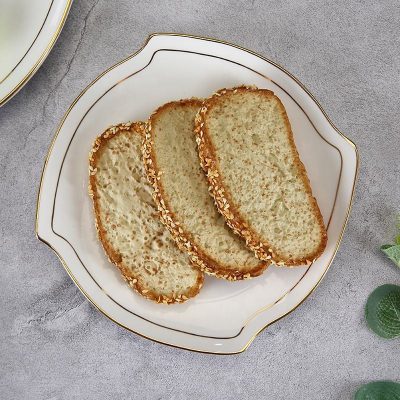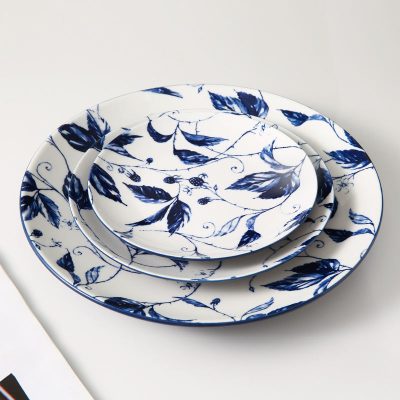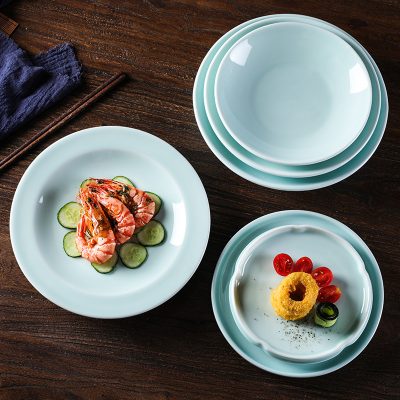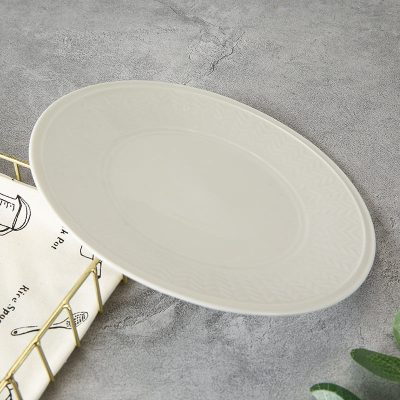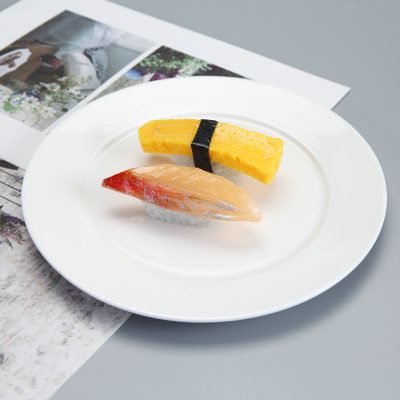- Contact us now!
- +86 18868944843
- been@thingegr.com
Can ceramic tableware be glazed?
Can ceramic tableware be glazed? There are many ceramic handicrafts in our life. Most ceramic handicrafts will choose overglaze color when they are painted. Overglaze color is a very beautiful color, which can create a variety of patterns and artistic effects. However, there are also shortcomings in glaze color. We usually do not recommend glaze color for tableware. Because overglaze color is very easy to fade, if you wash it often, it is easy to fade. Moreover, the amount of lead dissolved in the glaze color is very high and harmful to human body. Let’s see if the tableware can be glazed.
Ceramic tableware: don’t choose overglaze color
Ceramic tableware has various shapes, exquisite and smooth, bright colors and is easy to clean. It is the first dazzle for most families to buy tableware. However, colored glaze on the ceramic surface may become a health killer. Lead, mercury, radium, cadmium and other elements in colored glaze are harmful to human body.
The production methods of ceramic tableware are divided into three types: overglaze color, underglaze color and underglaze color. The overglaze color ceramic is made of colored paper and pasted on the glaze surface or directly painted on the product surface with pigment, and then baked at low temperature. Because the baking temperature cannot reach the melting degree of the glaze layer, the flower surface cannot sink into the glaze. Touch the overglaze color ceramic with your hand, and you can feel that the flower surface has obvious concave-convex feeling. The baking temperature of the underglaze color ceramic can make the glaze melt, the pigment can sink into the glaze, and be covered by the glaze layer after cooling. The surface of the product is smooth, and there is no obvious concave-convex feeling when touching. The underglaze color ceramics are all decorated on the porcelain body. After glazing, they are fired at high temperature once. The flower surface is covered by the glaze layer, which looks bright, flat and smooth.
Harmful metals mainly come from overglaze pigments. The radioactive element radium can kill white blood cells. Cadmium, lead and mercury are heavy metals. Cadmium and lead can cause liver or other visceral poisoning, and mercury can cause liver and kidney sclerosis. When overglaze color tableware is used for a long time to hold foods with high organic acid content such as vinegar, wine, fruit juice, vegetables, etc., heavy metals such as lead in tableware will dissolve out and enter the human body with the food for accumulation, which will cause chronic heavy metal poisoning over time.
In order to reduce costs, some small ceramic manufacturers purchase cheap raw materials with high lead and cadmium content and unstable performance. In the production process, the lead dissolution of ceramic products will not meet the standard due to the factors such as too large decoration area, insufficient baking temperature or improper processing by workers. Even some individual and private enterprises, in order to make more profits, arbitrarily shorten the baking time or reduce the baking temperature, and use the old-fashioned baking furnace that completely depends on the experience of workers, which seriously restricts the quality of ceramic tableware.
